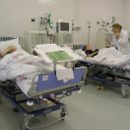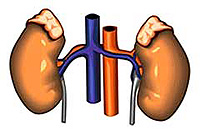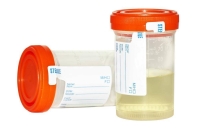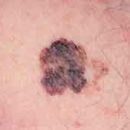What is Reiter's Syndrome? What are the symptoms of Reiter's syndrome? How diagnostics is carried out? How is the treatment of Reiter syndrome? Answers to these questions you will find in the article.
Content
There is no chest infection, it affects the urinary system or
gastrointestinal. However, the joints suffer. Infection
Speaker «Trigger crochet», which violates the work of immune
Systems and exactly the last «attack» on joint. Therefore even
Elimination of infection with antibiotics does not always help
Get rid of problems.
Term «Jet Arthritis» (T.E. Inflammation of Sustav,
which occurs as a reaction, response to infection elsewhere) was
Offered by Anchoven in 1969. Interestingly, until recently
This disease wore the name of the German Hans Reiter (which for the first time
described such a combination of symptoms), but the latter was a supporter
Nazis and Eugene, participated in experiments on people in
concentration camps. Therefore, now the preference is given to the term
«Jet Arthritis».
Reiter syndrome, Reiter symptoms
Reactive arthritis (Reiter syndrome) - inflammatory
Disease of the joints that develops after infection (not in the joint,
And in another body of the body). Infection that causes the development of reactive
Arthritis, usually amazes urinary roads or gastrointestinal
tract.
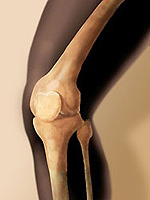
Reactive arthritis is not associated with the spread of infection by
organism and its hit in the joint. Suggest that inflammation
The joint is developing due to the fact that microorganisms contain substances
(Antigens), which are similar to antigens of the body tissues. Immune
system «confused» Antigens of the joint and microorganisms, as a result she
Attacks and microbes, and the joint. In the joint, inflammation is developing, which
And causes problems.
Three classic symptoms of reactive arthritis: eye inflammation (conjunctivitis - eye redness, feeling of burning in eyes, tear), inflammation of urinary tract (urethritis -
pain or burning in urination, urination increase) and
Inflammation of the joints (arthritis - pain in the joints, their redness, edema,
Hot joints, mobility are limited).
Usually, reactive arthritis begins 2-4 weeks after
intestinal or venereal infection. More often the first symptoms
urethritis, then developing conjunctivitis, and last - arthritis.
Approximately every fourth patient has changes to the skin
of various appearance.
Symptoms of reactive arthritis are usually saved from three to
Twelve months. In most cases, symptoms of conjunctivitis and
Ureteritis are very weak and only 1-2 joints are inflamed. In some
Patients, however, reactive arthritis can be acute and heavy,
restrict their physical activity.
Recurrements (repeated exacerbations) are rare.
Causes of Reiter's syndrome
Most often, reactive arthritis is associated with microorganisms,
called chlamydia. Usually referred to
Contacts. Often the infection has no symptoms, but the most frequent
symptoms (if present) - pain or unpleasant feeling
urination and selection of penis or vagina.
In addition, reactive arthritis can cause bacteria,
Agrowing gastrointestinal tract: Salmonella, Shigella, Irancini and
Campylobacteria. Symptoms of damage to the gastrointestinal tract
are heavy diarrhea with blood and mucus in a chair. Infection
is due to the reception of incorrectly cooked food, when contacting in
with infected people or feces (microorganism should get into
Gastrointestinal tract).
Jet arthritis develops far from all people after
Transferred infection. The reasons for such selectivity are unclear. Showing,
What often the disease develops in people having a special gene - HLA B
27 (Ash El-A BE-27).
Jet arthritis most often affects people aged
20-40 years. Interestingly, after sexually transmitted infections,
Men are getting nine times more often than women, while after
intestinal infections Danger is the same. Men are sick several
Heavier than women.
Diagnosis of Reuters syndrome
Simple and unambiguous tests that allow you to diagnose
reactive arthritis yet. The doctor may suspect this
diagnosis with the correct question of the patient and its examination, and then
Assign special research to confirm it.
- During the examination, special attention is paid to the detection of signs of lesion of the joints, eye, urogenital, leather.
- Special
Studies are necessary for two reasons: to confirm the diagnosis
reactive arthritis and to eliminate other causes of arthritis.
- At
Arthritis is often raised by the erythrocyte sedimentation rate (EE) and content
C-reactive protein (CRH); These tests indicate that
The body of inflammation.
- Research on the rheumatoid factor (RF) and antinuclear factor (ANF) in reactive arthritis give a negative result.
- Detection of HLA 27 - argument in favor of reactive arthritis.
- Research
On infections (chlamydia, Iracinia, etc.) is important,
because it makes it possible to detect the probable cause of the disease. Research
may be separated from the genital paths, blood, chair, etc.
- For
Exceptions of infection in the joint (bacterial arthritis) sometimes perform
Sustain puncture and investigate liquid taken from it (synovial
liquid).
- X-ray study maybe
apply to evaluate the condition of the joint, but it is clear to establish
the cause of the jointness of the joint it makes it infrequent.
Treatment of Reiter syndrome
Treatment with reactive arthritis is mainly aimed at relieving symptoms.
If there are signs of active infection, the appointment is justified
antibiotics to eliminate bacteria and remove the root cause of inflammation.
Non-steroidal anti-inflammatory drugs (for example, ibuprofen,
Diclofenac, Indomethacin and DR.) reduce pain and inflammation of the joints.
In case of severe, the joints of the joints sometimes perform the injections in them glucocorticoids (anti-inflammatory hormones).
With long-term preservation of pain in the joints are prescribed
Anti-inflammatory drugs that slow down the damage to the joint - sulfasalazine, methotrexate and some others.
During active inflammation, the joint should be protected from loads.
However, after its relief, a gradual recovery is recommended
physical activity.


